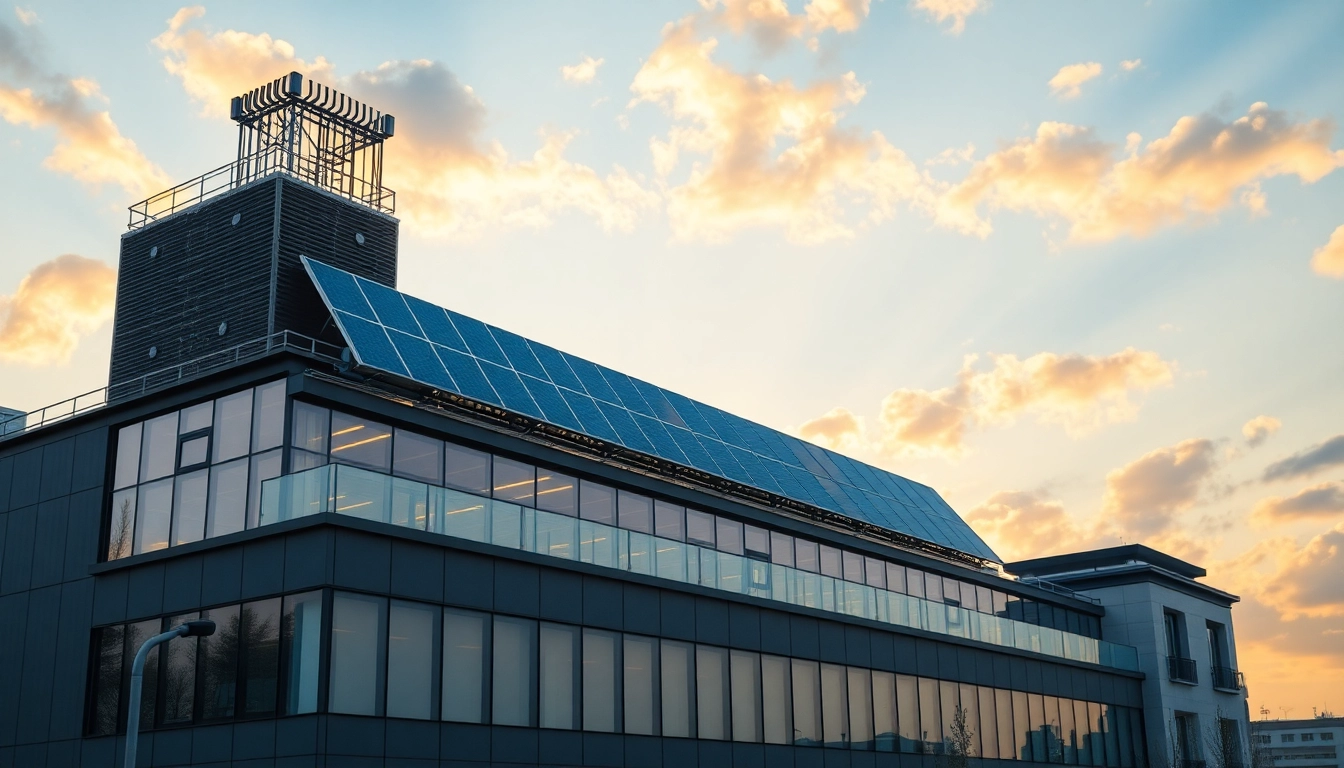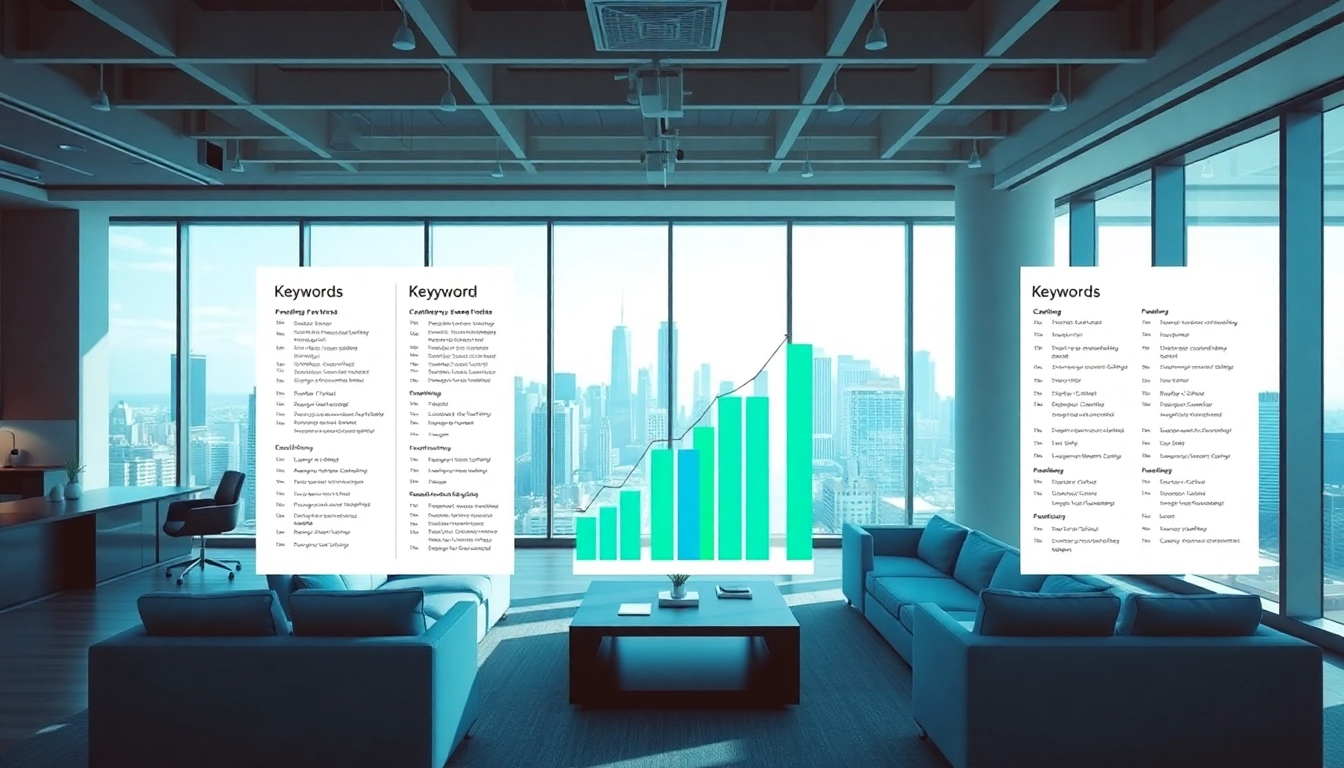
Understanding Commercial Solar: Basics and Benefits
The rise of commercial solar energy reflects an increasing awareness of the importance of sustainable practices in the business sector. As companies seek environmentally-friendly practices to reduce their carbon footprints, commercial solar systems have become a viable and beneficial option. They offer not only an avenue for sustainable energy source expansion but also a method to significantly reduce operational costs. This comprehensive guide explores the essential aspects of commercial solar, from its fundamental concepts to its broader impacts on businesses and the environment.
What is Commercial Solar?
Commercial solar refers to solar energy systems designed to meet the energy demands of businesses, schools, and other commercial enterprises. Unlike residential solar systems, which cater to home energy needs, commercial solar arrays typically cover larger spaces and produce greater amounts of electricity. These installations can take diverse forms, including rooftop systems mounted on commercial buildings, ground-mounted arrays, or even solar farms located on large tracts of land.
Key Benefits of Implementing Commercial Solar
Integrating solar energy within commercial operations bears numerous benefits. Key advantages include:
- Cost Savings: By harnessing solar energy, businesses can drastically reduce their electricity costs, resulting in long-term savings that can improve the bottom line.
- Environmental Impact: Utilizing solar technology diminishes reliance on fossil fuels, reducing greenhouse gas emissions and promoting cleaner air quality.
- Energy Independence: Commercial solar systems provide a level of energy autonomy, lessening vulnerability to fluctuations in electricity costs and supply shortages.
- Increased Property Value: Buildings equipped with solar systems are often more appealing to buyers and tenants, potentially increasing property values.
- Government Incentives: Numerous incentives, such as tax credits, can significantly offset installation costs and enhance the return on investment (ROI).
How Commercial Solar Systems Work
At the core of any commercial solar installation are photovoltaic (PV) panels, which convert sunlight into electricity. The integral components of a commercial solar system include:
- Photovoltaic Panels: These panels collect solar energy and convert it into usable electrical energy through the photovoltaic effect.
- Inverters: These devices convert direct current (DC) electricity generated by the panels into alternating current (AC) electricity, which is suitable for use by most commercial equipment.
- Mounting Structures: Commercial solar panels are typically mounted on rooftops or ground-based installations, secured by structures designed to withstand environmental conditions.
- Performance Monitoring Systems: Advanced systems are integrated to monitor energy production and operational efficiency, allowing for immediate adjustments or repairs.
Cost Analysis: Is Commercial Solar Worth the Investment?
Investing in a commercial solar system often involves substantial initial capital, but the long-term cost benefits can be significant. In evaluating the worth of such a system, two primary considerations dominate: the initial costs and the potential for long-term savings.
Initial Costs versus Long-term Savings
Initial investment costs for commercial solar systems can range from $140,000 to over $500,000, depending on system size and energy needs. However, an analysis of long-term savings reveals a different picture. Businesses can achieve payback periods of anywhere from 5 to 7 years after installation, further enhanced by favorable financing options. Once the initial investment is recouped, companies can enjoy decades of nearly free energy.
Incentives and Financial Assistance Options
To offset initial expenses, commercial solar projects may benefit from various incentives and programs that accrue across the project’s lifespan. These can include:
- Federal Tax Credit: The Investment Tax Credit (ITC) allows businesses to deduct a significant portion of their solar installations from federal taxes.
- State and Local Rebates: Many states offer additional incentives in the form of direct rebates, further reducing overall system costs.
- Financing Options: Creative financing methods, such as Power Purchase Agreements (PPAs) or solar loans, can spread costs over manageable periods.
ROI Calculations for Businesses
Calculating the return on investment (ROI) for commercial solar projects involves analyzing initial costs against potential savings over time. Key metrics include:
- Net Present Value (NPV): NPV assesses the profitability of an investment by considering expected cash inflows and outflows over a lifetime.
- Internal Rate of Return (IRR): IRR measures the expected annual return from the investment over its lifetime.
- Payback Period: This metric identifies how long it takes for savings to equal the initial investment, a crucial factor for cash-strapped businesses.
Types of Commercial Solar Systems
Commercial solar systems come in various forms, each suited to different applications and energy needs. Understanding the full spectrum of options can help businesses select the most appropriate system.
Rooftop Solar Installations
Rooftop solar power systems are one of the most common types for commercial properties. These systems capitalize on otherwise unused roof space and can be installed with minimal disruption to ongoing business operations. Rooftop systems also enhance building aesthetics and can often be secured without extensive ground preparation.
Ground-Mounted Solar Arrays
For businesses with ample land, ground-mounted solar arrays provide a flexible and scalable solution. These systems can produce significantly higher energy outputs compared to rooftop installations, particularly for larger facilities including manufacturing plants and warehouses. Ground arrays can also allow for various configurations and orientations to maximize solar exposure.
Hybrid Systems and Their Applications
Hybrid systems combine solar energy with other renewable energy sources or traditional energy systems, enhancing reliability and energy efficiency. For instance, a solar-battery hybrid system can store excess energy generated during peak sun hours for use during high-demand periods or darker days. These systems provide greater energy independence and resilience against grid outages.
Selecting the Right Commercial Solar Provider
Choosing a reputable provider is essential for ensuring a successful commercial solar installation. The right partner can facilitate custom solutions that meet specific business goals and energy needs.
What to Look for in a Commercial Solar Company
When evaluating potential solar providers, businesses should consider several critical factors:
- Experience: Look for a company with a proven track record and extensive experience in commercial solar installations.
- Certifications: Verify that the provider holds relevant certifications (such as NABCEP) that demonstrate technical proficiency and adherence to industry standards.
- Customer Reviews: Insights from previous customers provide valuable information regarding reliability and satisfaction with the service.
Questions to Ask During Consultations
During meetings with potential solar providers, it’s essential for businesses to engage in thorough discussions to understand the full scope of the offering. Key questions might include:
- What is the expected timeline for project completion?
- What warranties and service agreements are provided?
- How will this system be tailored to our specific energy requirements?
Case Studies and Customer Reviews
Exploring case studies from potential vendors can offer insights into successful solar project implementations. Analyzing these case studies can help businesses visualize how installation might impact their operations, as well as provide reassurance through documented results and customer testimonials.
Maintaining and Optimizing Your Commercial Solar System
Once a commercial solar system is installed, maintaining its optimal performance is essential for ensuring longevity and consistent energy production. Proper upkeep practices can lead to enhanced efficiency and reduced repair costs over time.
Regular Maintenance Practices
Regular maintenance for commercial solar systems should include:
- Cleaning the Panels: Dust and debris can accumulate on solar panels, hindering sunlight absorption. Periodic cleaning is essential to maintain efficiency.
- Inspecting Components: Regular inspections of wiring, inverters, and mounting devices ensure everything remains in good condition and operational.
- Performance Monitoring: Using monitoring systems allows operators to track energy production and promptly identify irregularities.
Monitoring and Energy Efficiency Improvements
Advanced monitoring technologies can help businesses optimize energy use. By leveraging real-time data, companies can adjust their energy consumption patterns or even adjust their solar energy outputs based on operational needs. This leads to maximized savings and improved overall efficiency.
Future Trends in Commercial Solar Technology
The commercial solar landscape is continually evolving, driven by technological advancements and growing environmental concerns. Emerging trends include:
- Integration of Energy Storage: Battery storage solutions allow businesses to utilize solar energy during off-peak times, enhancing efficiency.
- Smart Grid Connections: Modern systems can interact with smart grids, further optimizing energy distribution and efficiency.
- Innovative Financing Solutions: The solar sector continues to offer new financial models, enabling businesses of all sizes to invest in renewable energy technologies.
As commercial solar energy options continue to expand, it becomes increasingly clear that embracing solar solutions is not only beneficial for individual businesses but also essential for fostering a sustainable future.






